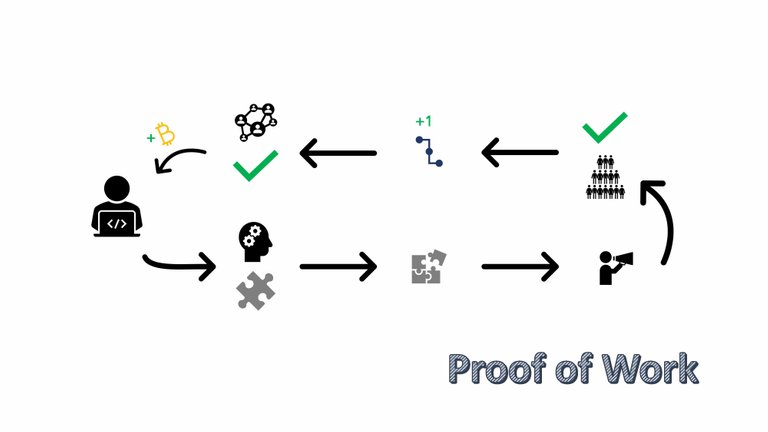
Hey people
Today we are still not going to talk about Libra (we will get there, a little patience) but as promised about Proof of Work.
Have a good reading!
In 2008, Satoshi Nakamoto released the Bitcoin blockchain white paper where he explained his idea to create a means of trustless exchange. In his research work, he proposed using computing power to determine who will have the right to add the next block to the registry.
So how does it work in practice? Each participant who wishes to add a block to the Blockchain must solve a mathematical problem that requires significant computing power. If a participant finds the solution, the Hash function generally, he shares it with the network, and after validation of the network, he gets the right to add his block to the chain. In this block, we find the validated transactions, the hash of the previous block (which allows to form the chain) as well as the hash used for this block.
« The majority decision is represented by the longest chain, which has the greatest proof-of-work effort invested in it. If a majority of CPU power is controlled by honest nodes, the honest chain will grow the fastest and outpace any competing chains. To modify a past block, an attacker would have to redo the proof-of-work of the block and all blocks after it and then catch up with and surpass the work of the honest nodes. » Bitcoin: A Peer-to-Peer Electronic Cash System, Satoshi Nakamoto, 2008
In other word, that means that you have to solve every mathematical problem since the block you want to change, which requires a lot of computational power. In the meantime, and people continue to mine for the next block. So, it’s almost impossible to change a block.
Thus, S. Nakamoto made sure to create a system that is almost impossible to falsify, and that nobody can really take control of. Indeed, even if a person could have 51% of the network's computing power, the network would lose its users and their trust.
Last, the people who use their computing power to create blocks are miners. They receive one reward per validated block as well as the transaction fees. This is what incentivizes them to do the calculation work, since it is very expensive in terms of energy.
Today, the most famous blockchains we know use PoW consensus (Bitcoin and Ethereum blockchain for exemple). However, some issues have appeared in recent year that question this system.
The first concerns the energy consumed by the miners of the Proof of Work consensus. In 2015, nearly $1 million was spent on electricity to supply miners.
Another point that has been raised is that of network security. In the case of the Proof of Work, if a miner wanted to take advantage of the network, he had to have 51% of its computing power to more easily validate the transactions he wanted. The problem is that companies have created farms for miners, and this leads to a centralization of this power. On the Blockchain of the Ethereum, 3 farms with miners own 50% of the computing capacity.
In 2015, the idea of changing the consensus mechanism on the Ethereum Blockchain to Proof of Stake was proposed by the creator, Vitalik Buterin. In proposing this, he clearly questioned the legitimacy of the Proof of Work. Different arguments explain this shift.
And we will see this next time!
Make sure to upvote if you liked the content and follow me !
Posted using Partiko iOS
This is great, man! You are learning so fast.
Posted using Partiko iOS
Congratulations @sounexpected! You have completed the following achievement on the Steem blockchain and have been rewarded with new badge(s) :
You can view your badges on your Steem Board and compare to others on the Steem Ranking
If you no longer want to receive notifications, reply to this comment with the word
STOPDo not miss the last post from @steemitboard:
Vote for @Steemitboard as a witness to get one more award and increased upvotes!